Earth is home to some of the most bizarre and alien-looking landscapes that seem to belong on another planet. Found in the most isolated corners of the globe, these natural wonders inspire awe and curiosity with their strange shapes, colors, and sometimes inexplicable formations. Each of these locations offers a glimpse into the unique forces that shape our planet, giving us landscapes that feel truly out of this world.
Devils Tower, Wyoming, USA

Devils Tower in northeastern Wyoming rises dramatically 386 meters above the surrounding landscape, creating an eerie, monolithic presence. Known as “Bear Lodge” to some Native American tribes, it holds a sacred place in many indigenous stories. This unique rock formation is believed to have been created by the solidification of magma within the Earth’s crust, which later became exposed through erosion. Its most striking feature is the hundreds of vertical cracks that run along its surface, creating fluted columns that seem almost too symmetrical to be natural. These columns, visible from miles away, contribute to the tower’s alien appearance. Designated as the first U.S. national monument by Theodore Roosevelt in 1906, it attracts tourists, geologists, and climbers alike. Its prominence in pop culture, particularly in films like Close Encounters of the Third Kind, adds to its mystique. A less commonly known fact is that Devils Tower also plays host to numerous bat species, which roost in its crevices. Additionally, the surrounding region is teeming with wildlife, making it a prime spot for observing prairie dogs and mule deer.
Chocolate Hills, Bohol, Philippines
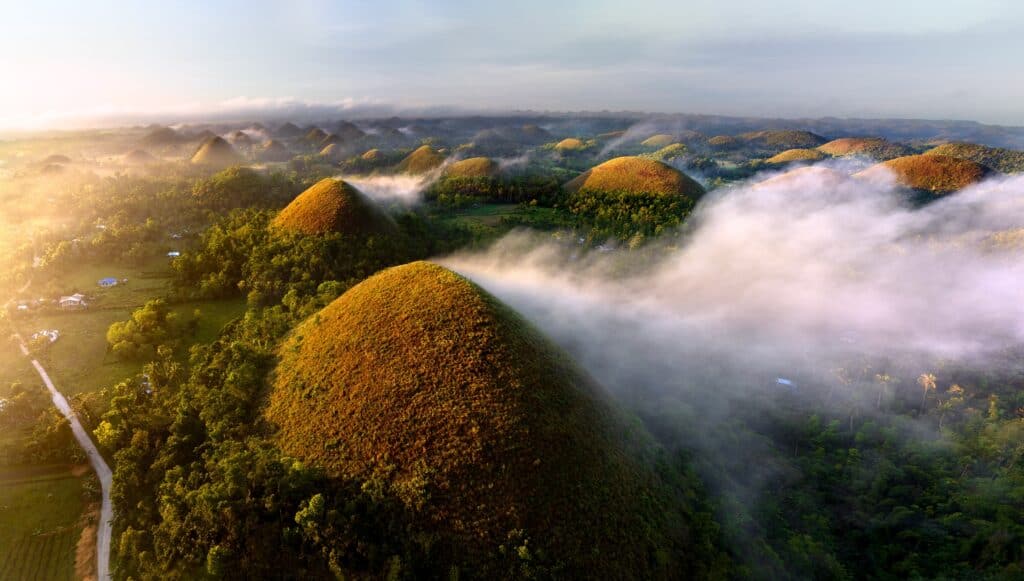
The Chocolate Hills in Bohol, Philippines, look like something from another planet. These 1,260 or more cone-shaped hills span over 50 square kilometers, creating a mysterious and symmetrical landscape. Formed from the uplift of coral deposits and eroded by rainwater over millennia, these limestone formations turn a chocolatey brown during the dry season, which is how they earned their name. While local folklore tells stories of the hills being the tears of a giant, their formation is a much slower geological process. Their uniformity in size and shape makes them appear man-made, adding to their alien aesthetic. Visitors to Bohol can admire this landscape from numerous viewpoints, including Sagbayan Peak, where the rolling hills stretch to the horizon. Notably, the Chocolate Hills are protected as a National Geological Monument, and conservation efforts have been implemented to preserve their unique appearance. Scientists continue to study the formation to understand the long-term effects of climate change on this natural wonder.
The Pinnacles, Western Australia
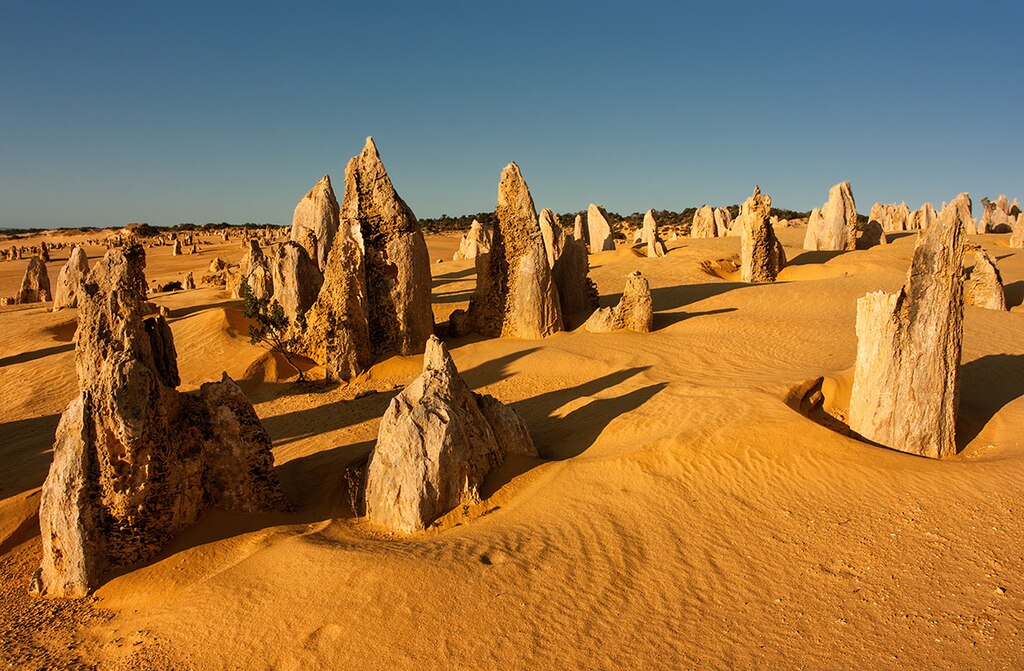
The Pinnacles in Nambung National Park, Western Australia, are a surreal and alien landscape formed by thousands of limestone pillars jutting out of the yellow desert sands. These eerie formations, some as tall as 3.5 meters, were created over millions of years through the hardening of seashell deposits left behind after ancient oceans receded. Erosion gradually removed the softer surrounding material, leaving behind the harder limestone columns we see today. The contrast between the pale limestone pillars and the golden sand creates a stark, otherworldly vista, particularly during sunrise or sunset when shadows stretch across the desert floor. Interestingly, despite the harsh desert environment, the Pinnacles area supports a surprising variety of wildlife, including emus and kangaroos, which visitors may spot during their trip. The origins of these formations remain a subject of ongoing scientific curiosity, with some aspects still unexplained.
Danakil Depression, Ethiopia
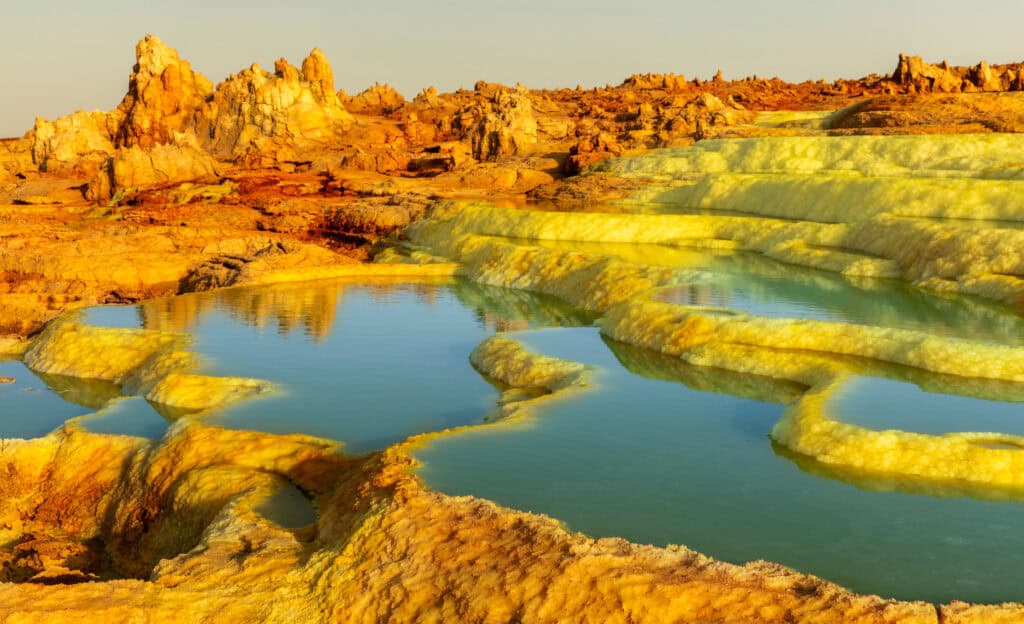
The Danakil Depression in Ethiopia is often referred to as the hottest place on Earth, with temperatures regularly soaring above 130 degrees Fahrenheit. Located in the northern part of the Afar Triangle, this sunken volcanic region is a landscape straight out of a science fiction novel. Its bubbling lava lakes, acidic hot springs, and bright yellow sulfur deposits create a scene so inhospitable that it feels otherworldly. The depression sits at the junction of three tectonic plates, making it one of the most geologically active areas on the planet. Despite its hostile environment, the Afar people have lived in the region for centuries, mining salt from the vast salt flats. The vivid colors and extreme temperatures have attracted geologists and adventurers, eager to experience the closest thing to Mars on Earth. It is also home to the Dallol ghost town, which was once a bustling mining outpost but is now abandoned. The area is also known for its sulfuric springs, which produce unique mineral formations not found elsewhere.
Goblin Valley, Utah, USA
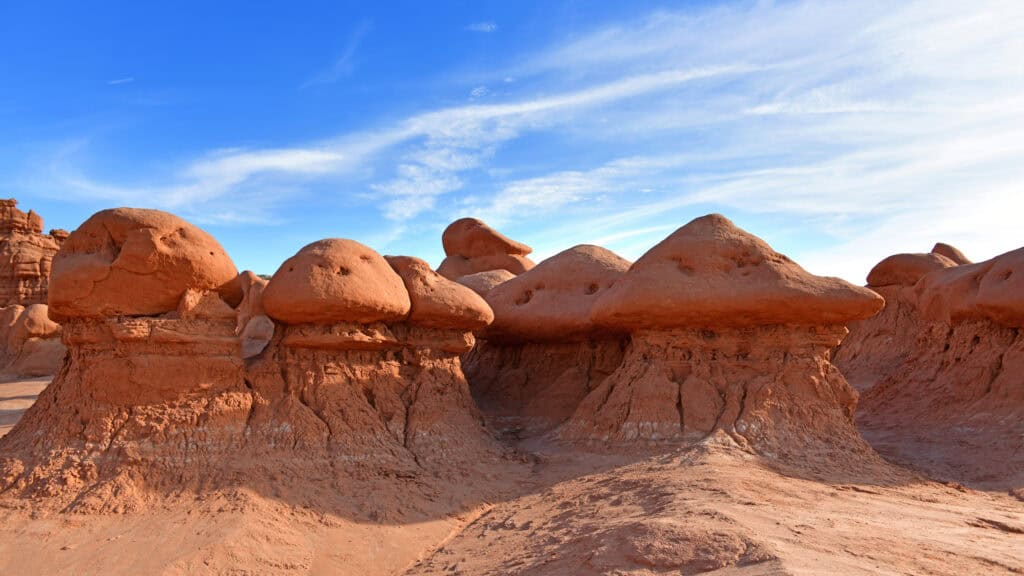
Goblin Valley in southern Utah is home to some of the most bizarre rock formations on Earth. Thousands of mushroom-shaped sandstone rocks, known as “goblins,” fill the valley, creating a surreal and alien-like landscape. These hoodoos were formed over millions of years through the erosion of soft sandstone, sculpted by wind and water into their distinctive shapes. The formations vary in size, with some standing as tall as 5 meters. Goblin Valley State Park, where these formations are located, offers hiking trails that allow visitors to explore the otherworldly terrain up close. The valley’s remote location and unique geology have made it a popular filming location for science fiction movies, further cementing its alien reputation. It is also known for its stunning night skies, offering some of the best stargazing opportunities in the United States. The park is also a favorite among rock climbers who come to scale the goblins’ soft sandstone surfaces.
Stone Forest, Yunnan, China

The Stone Forest in Yunnan, China, is a vast expanse of towering limestone formations that resemble a petrified forest. These sharp, jagged spires rise dramatically from the ground, creating a landscape that feels ancient and otherworldly. Covering over 300 square kilometers, it has been forming over millions of years through the gradual dissolution of soluble rocks, shaped further by wind and water erosion. According to local legend, a young girl named Ashima turned into stone in the forest after being forbidden to marry her true love, giving the area cultural significance as well. The site is a UNESCO World Heritage location and draws millions of visitors annually. It is also home to many caves and underground rivers, making it a hotspot for spelunkers and geologists alike. The area supports a wide range of flora and fauna, some of which are unique to this part of China.
Salar de Uyuni, Bolivia
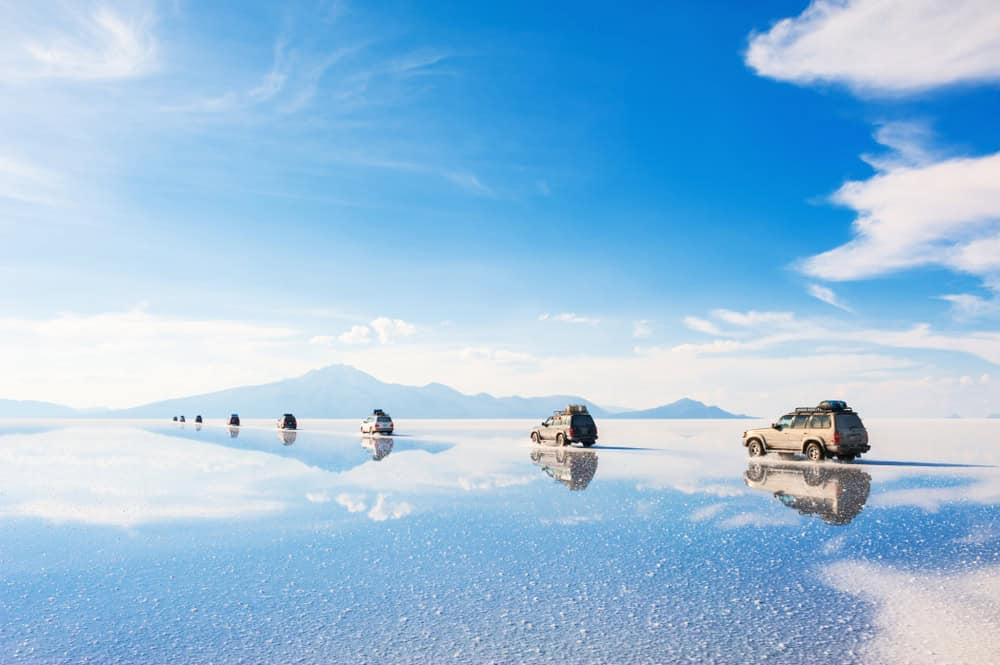
Salar de Uyuni, located in Bolivia, is the world’s largest salt flat, covering over 10,000 square kilometers. Its vast, unbroken white landscape creates a surreal, otherworldly view, especially during the rainy season when a thin layer of water transforms the area into a giant mirror. This illusion of walking on clouds or a reflective sky is created by the salt crust, which was left behind after a prehistoric lake evaporated thousands of years ago. The expanse is also home to Isla Incahuasi, a rocky island dotted with giant cacti, adding to the area’s surreal feel. The flats are crucial for Bolivia’s lithium extraction, holding one of the largest reserves of this valuable mineral. Visitors often marvel at the hypnotic, endless horizon that blends the earth and sky seamlessly. The area is also a haven for stargazing, where the uninterrupted night sky offers breathtaking views of the Milky Way. During drier months, the salt flats become a rugged, textured terrain that contrasts with its mirrored appearance during the wet season.
Wave Rock, Australia
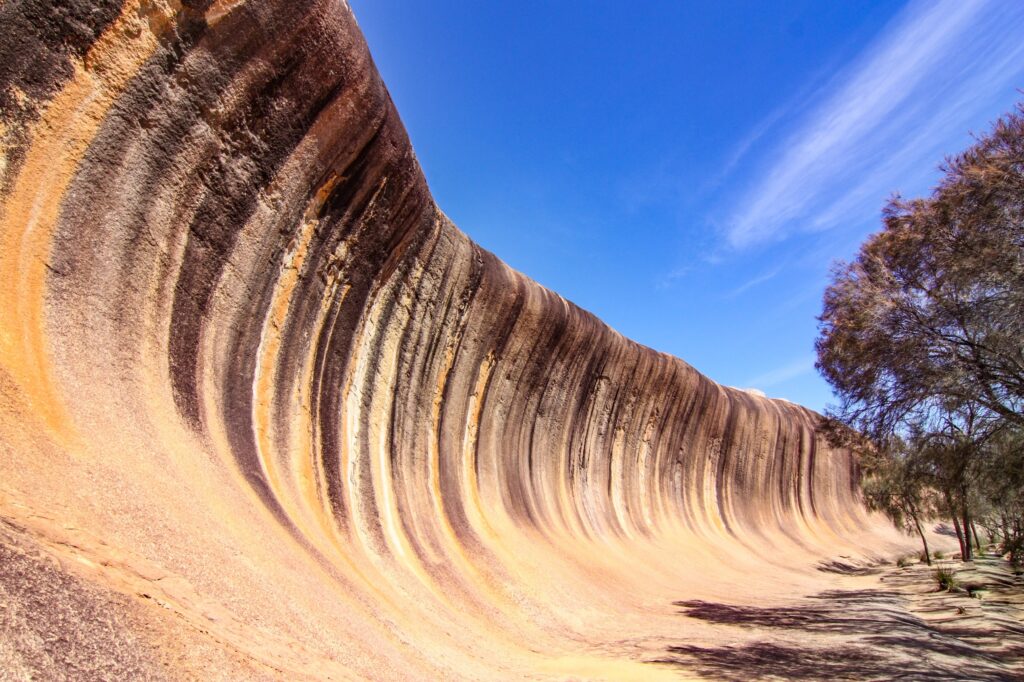
Wave Rock, found in Western Australia, is a natural rock formation that looks like a massive ocean wave frozen mid-crash. Standing at 14 meters tall and 110 meters long, it was sculpted over 2,700 million years ago by erosion and weathering processes. The stunning wave-like appearance is enhanced by the vertical streaks on the rock’s surface, caused by water runoff that left behind deposits of minerals. This unique landmark is significant in Aboriginal culture, with Dreamtime stories describing its creation. The sheer scale of Wave Rock and its isolated location make it a favorite among travelers who are drawn to its alien-like beauty. Visitors can also explore the surrounding area to discover ancient rock paintings and native wildlife.
The Eye of the Sahara, Mauritania
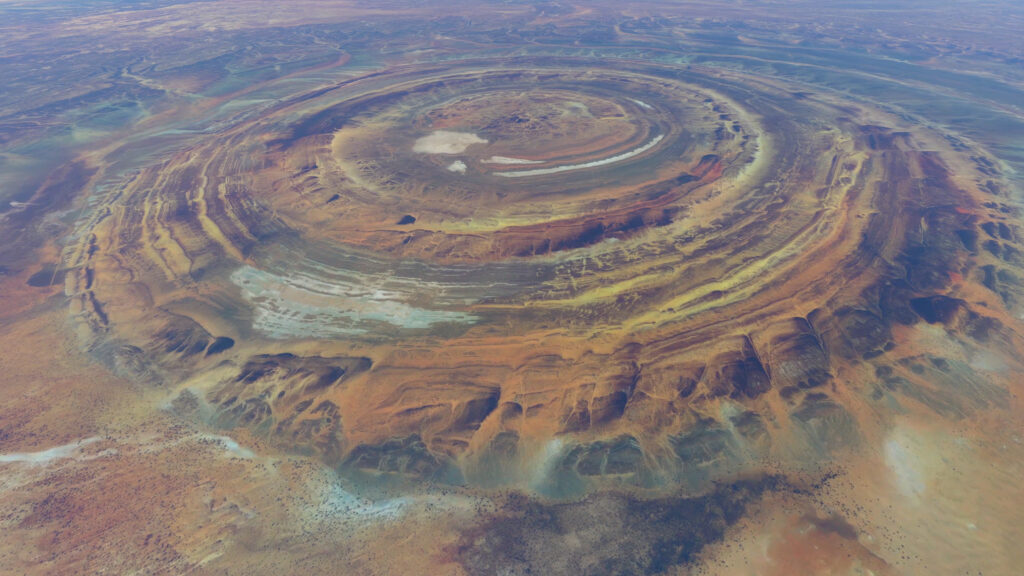
The Eye of the Sahara, or Richat Structure, is a prominent, circular rock formation located in Mauritania, visible from space due to its bull’s-eye shape. The formation spans 40 kilometers in diameter and is made up of concentric rings of rock that reveal the area’s geological history. While early scientists thought it was formed by a meteor impact, it is now believed to have been created by erosion of a domed structure over millions of years. The structure’s isolated location in the Sahara Desert, combined with its striking appearance, makes it a puzzling and captivating natural wonder. The Eye’s rings are composed of different rock layers, offering a glimpse into the Earth’s processes of uplift and erosion. For those venturing into this remote desert, the journey itself is part of the experience, with vast sand dunes and barren landscapes stretching for miles.
Blood Falls, Antarctica
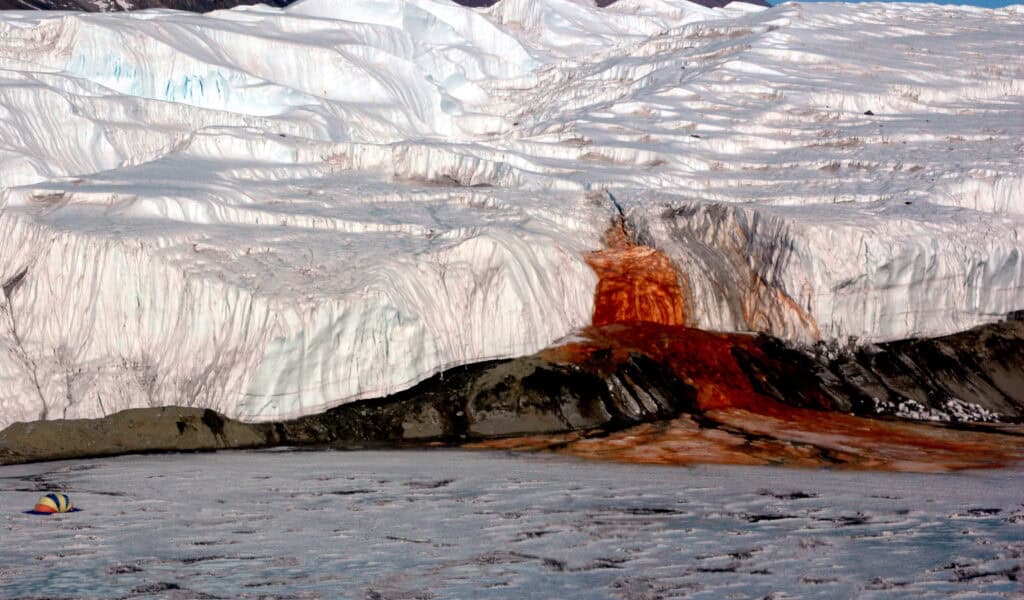
Blood Falls in Antarctica is one of the most bizarre and eerie natural phenomena on the planet. Located in the McMurdo Dry Valleys, this waterfall flows from the Taylor Glacier, its blood-red hue creating a stark contrast against the icy white landscape. The deep red color is caused by iron-rich water that has been trapped beneath the glacier for millions of years. When the iron in the water reacts with oxygen at the surface, it oxidizes and turns red. This isolated and harsh environment, coupled with the striking visual effect of Blood Falls, makes it one of Antarctica’s most alien-looking features. Recent studies have revealed that the briny water supporting the flow of these falls hosts microbial life, further sparking scientific curiosity about life in extreme environments. The site’s inaccessibility and the extreme cold conditions make it a challenging destination for explorers.
Tianzi Mountains, China
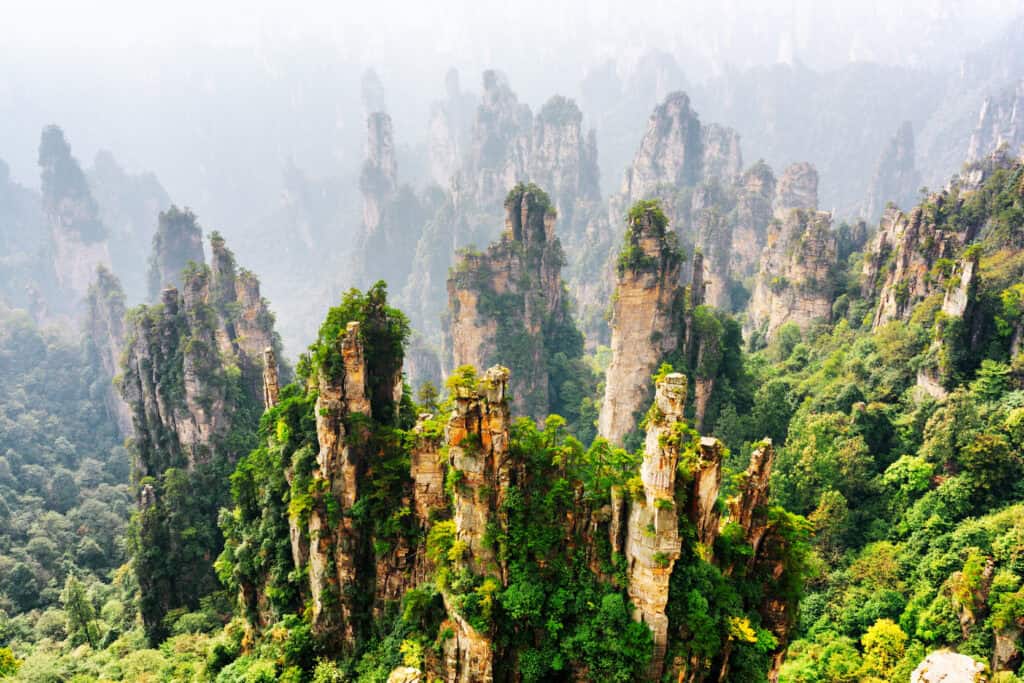
The Tianzi Mountains in Zhangjiajie, China, are a collection of towering sandstone pillars that seem to emerge straight from a science fiction landscape. These pillars, formed over 300 million years ago, rise from mist-filled valleys, creating an ethereal and surreal atmosphere. Erosion shaped the sandstone into tall, slender columns, some of which stand over 1,200 meters high. The dense greenery clinging to the cliffs adds to the otherworldly feel of the area. These mountains have been the inspiration for floating mountain scenes in films, highlighting their otherworldly beauty. The mist that often shrouds the mountains gives the area a mystical vibe, making the peaks appear to float. The scenic area also boasts rich biodiversity, with several plant and animal species unique to the region.
Mono Lake Tufa Towers, USA
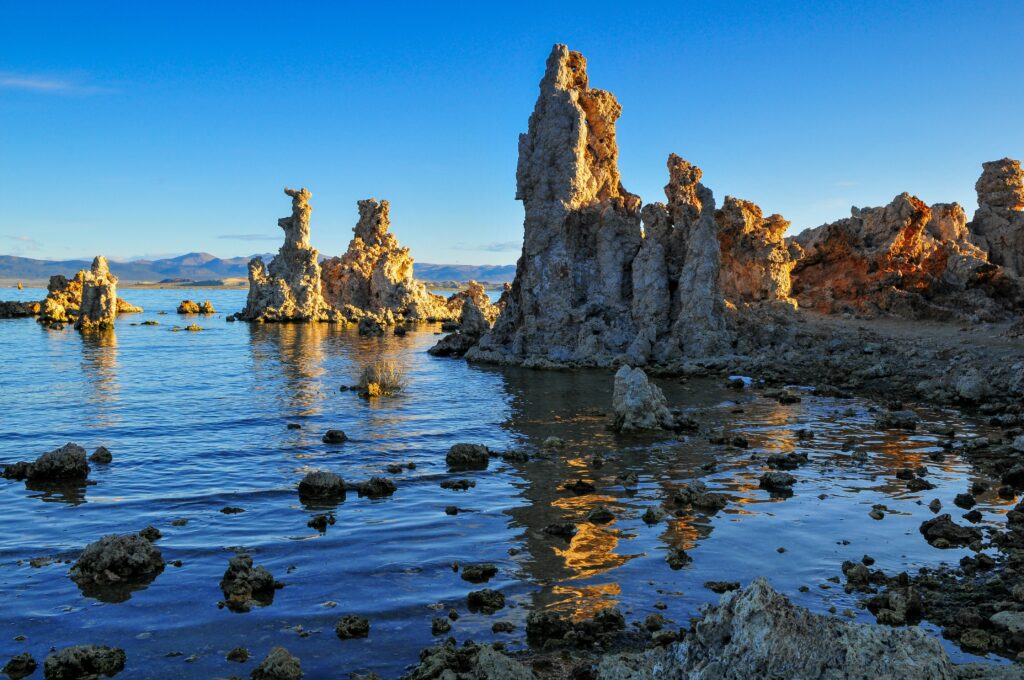
Mono Lake in California is known for its striking tufa towers, formed by the interaction of freshwater springs and the lake’s alkaline water. These spires, some reaching over 30 feet in height, create an eerie, moon-like landscape. The lake itself is one of the oldest in North America, and its high salt content makes it inhospitable to fish but perfect for algae and brine shrimp, which support a massive migratory bird population. The tufa towers add to the lake’s alien feel, rising dramatically from the water’s surface. Visitors to Mono Lake can also explore the area’s rich ecosystem, which plays a critical role in bird migration patterns. Efforts to preserve the lake and its unique features have been ongoing since the 1980s, emphasizing the importance of this ecological and geological site.
Marble Caves, Chile
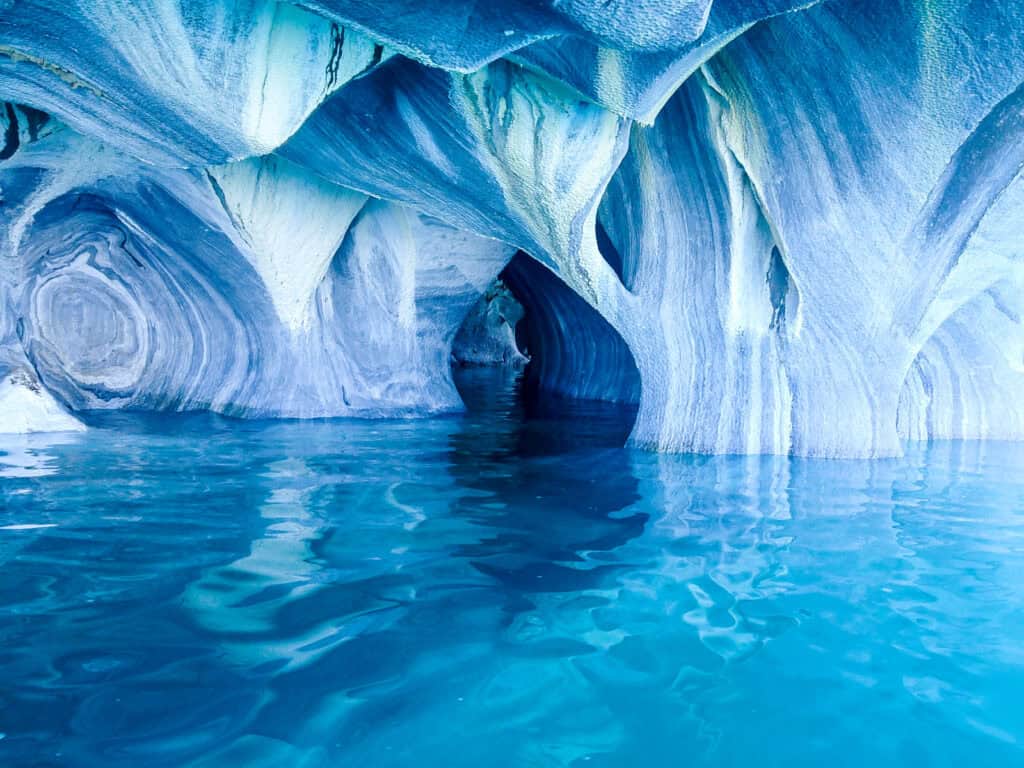
The Marble Caves in Chile, also known as Cuevas de Mármol, are a series of sculpted caves along General Carrera Lake, their swirling blue patterns and marble textures creating a mesmerizing visual experience. Formed by thousands of years of wave erosion on calcium carbonate, the caves display a vibrant array of blues, particularly striking when sunlight reflects off the lake’s waters. Visitors can explore the caves by boat, witnessing firsthand the interplay of light, water, and rock that makes this location so unique. These caves are a geological treasure, with their formations constantly changing due to the movement of water. The lake itself is one of the largest in South America, further adding to the grandeur of this natural wonder.
Sailing Stones, USA
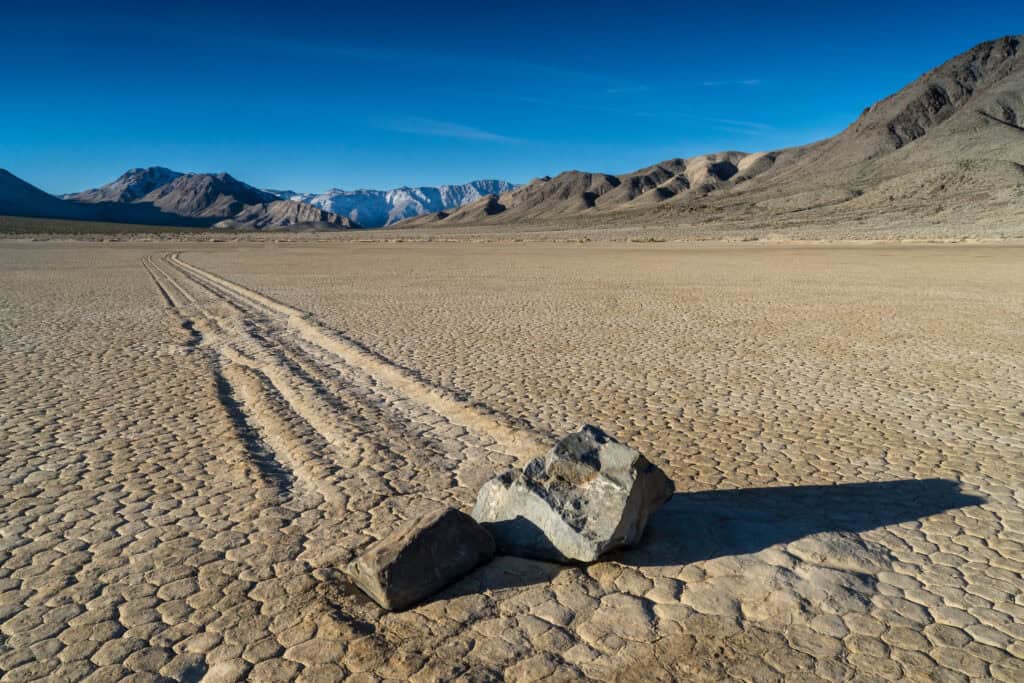
The Sailing Stones of Racetrack Playa in California’s Death Valley National Park are a geological mystery that has baffled scientists for decades. These large rocks, some weighing hundreds of pounds, move across the dry lakebed without any human or animal intervention, leaving long trails behind them. Recent research suggests that a combination of thin ice sheets and wind might be responsible for this phenomenon, but the exact process remains a subject of scientific curiosity. The barren, isolated landscape of Death Valley, combined with the mysterious movement of these stones, gives the area an alien-like quality. The playa’s cracked, parched surface adds to the surreal effect, making it one of the most unusual and enigmatic places in the United States. The area’s extreme conditions also contribute to its otherworldly atmosphere, with temperatures soaring above 120°F during the summer.
This article originally appeared on Rarest.org.
More from Rarest.org
12 Revolutionary Military Tactics That Altered Warfare

Warfare has evolved over centuries through the development of revolutionary tactics that dramatically altered how battles are fought and won. From the disciplined formations of ancient times to the use of modern stealth technology, each new strategy or method has reshaped military doctrine and the balance of power on the battlefield. Read More.
9 Legendary Rivalries That Defined Sports History

Rivalries are the heart of sports, fueling some of the most memorable moments in history. Whether it’s a showdown between individuals or teams, these legendary battles go beyond just winning and losing—they shape the legacy of the sport itself. Read More.
16 Unique Flora and Fauna Found Only in Isolated Ecosystems

Isolated ecosystems have given rise to some of the most unique plants and animals on Earth. These regions, often cut off from other landmasses for millions of years, allow species to evolve in ways that are found nowhere else. Read More.
